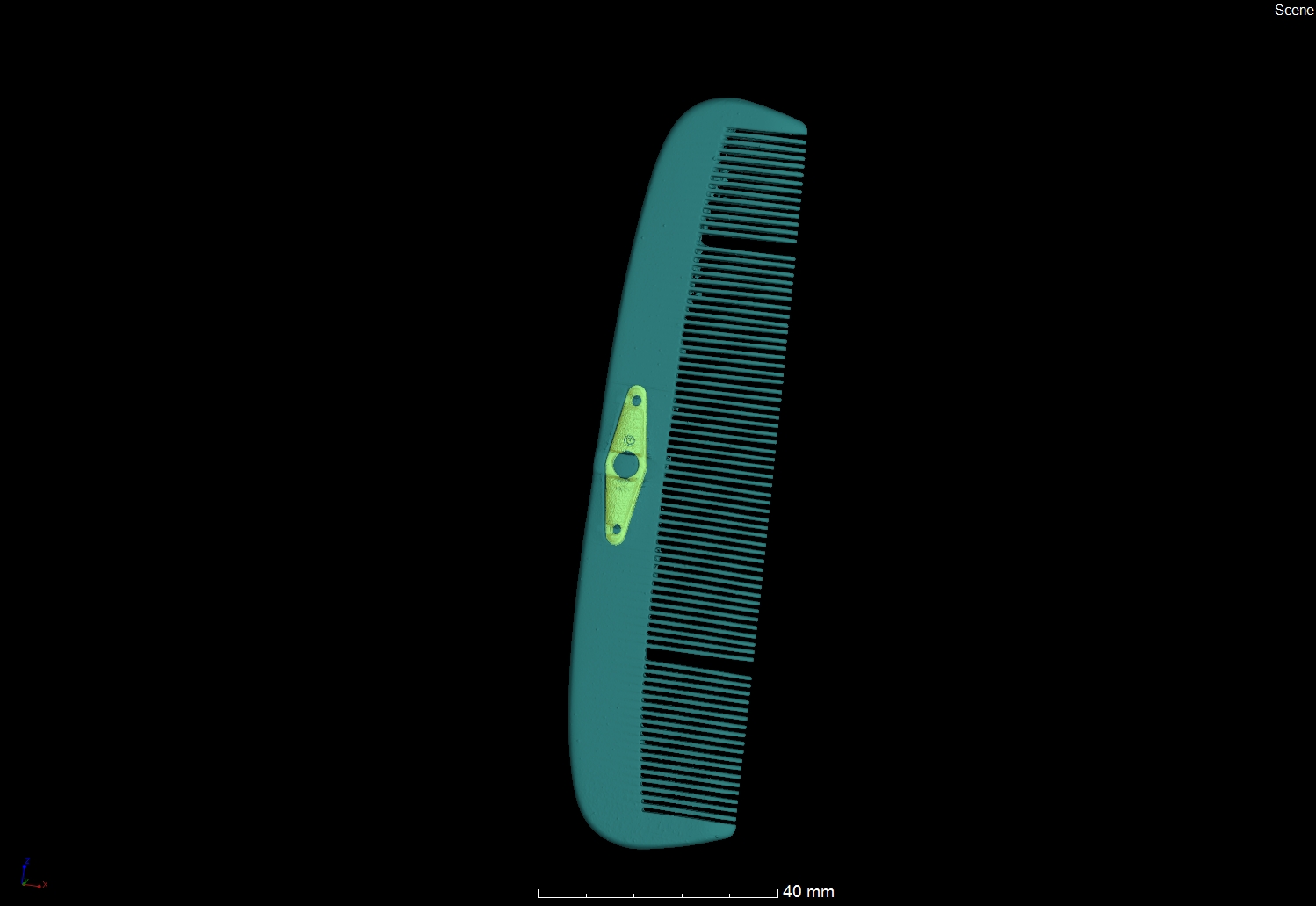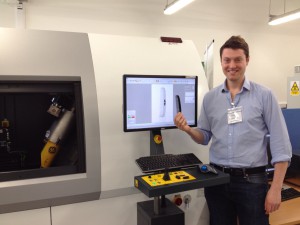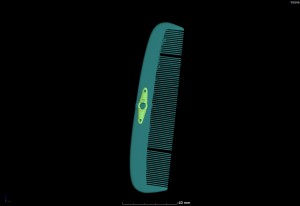
June 16, 2015, by Lindsay Brooke
Plant scientists with x-ray vision discover rare escape and evasion device
The inquiry:
In March this year Mr David Lyons a collector of WW2 memorabilia from West Bridgford in Nottinghamshire emailed University of Nottingham plant scientists with an unusual request:
He said: “I have a plastic comb from the Second World War – this comb was issued to aircrew and contains a concealed compass. On finding yourself in enemy territory the comb was to be broken in two and the compass retrieved. I would love to see what’s actually inside this rare comb and wondered whether you may be able to help using one of your non-destructive scanning devices.”
The problem
David Lyons had bought the old comb from a fellow collector he wanted to know if it was indeed a rare escape and evasion devise used by an RAF aircrew during the Second World War – but how to find out without destroying a precious piece of history?
Mr Lyons brought the comb along to the Hounsfield Facility on the Sutton Bonington Campus to see if the experts with special x-ray machinery could help; and he wasn’t disappointed.
The secret revealed
One of the facility’s powerful X-ray scanners, capable of studying roots in the soil without disturbing the plant, revealed a small diamond shaped compass – including luminous dots indicating North and South – hidden inside the plastic comb.
Mr Lyons said: “The comb was originally issued to a member of 612 Squadron in 1942. It was carried on missions over Europe. In the event of having to escape from enemy territory the comb had to be broken in two, the compass removed and suspended from a piece of thread. At which point the compass, nicknamed a ‘swinger’, gave the airman his basic direction of travel.”
Co-Director and Facility Manager, Dr Craig Sturrock, said: “Mr Lyons wasn’t wrong. We were able to produce a 3D picture of the comb and escape compass concealed inside the plastic.”
A little bit of history preserved
Mr Lyons said: “I am thrilled that there is a compass inside and that it can be seen so clearly. Very few of these items survive because they were designed to look like every day disposable items and were consequently thrown away or broke.’
Mr Lyons has a collection of RAF escape aids and aircrew log books, which can be seen on his website.
No comments yet, fill out a comment to be the first



Leave a Reply